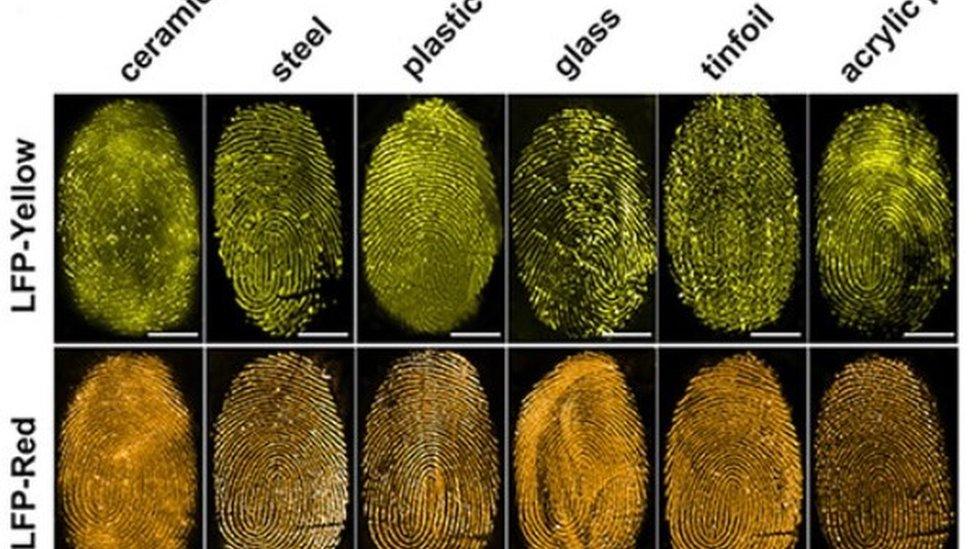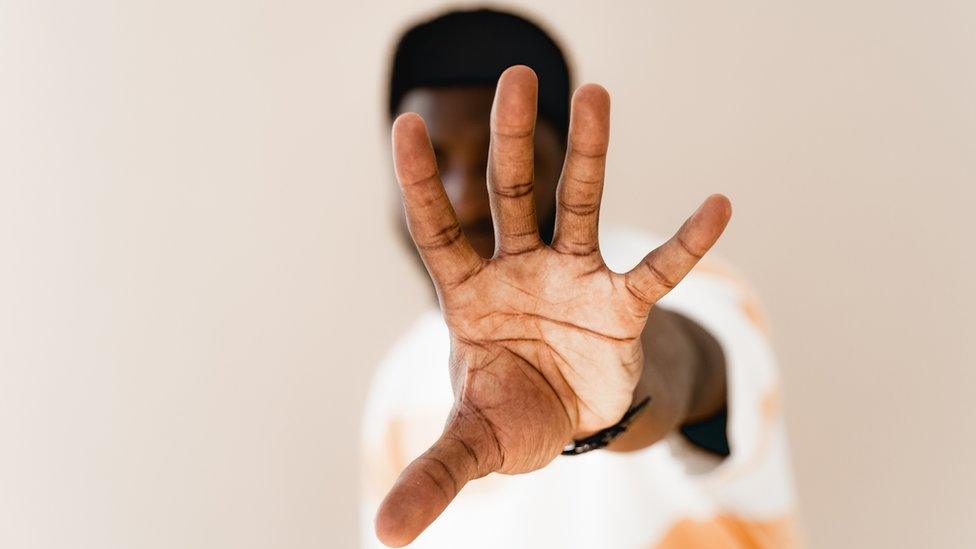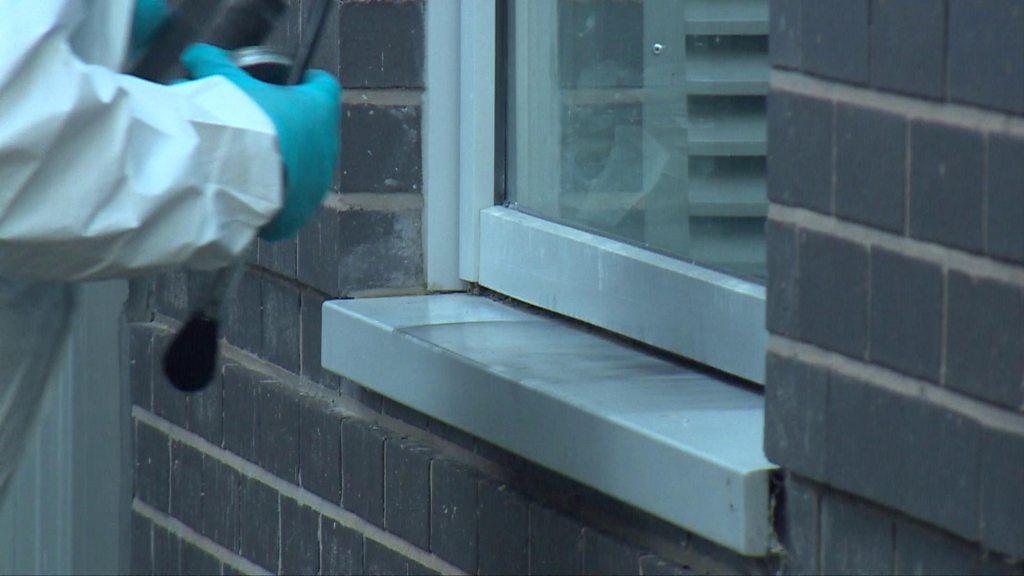Jellyfish protein to detect fingerprints in seconds
- Published

The dye spray made from jellyfish protein enables rapid visualisation of fingerprints at crime scenes
Scientists have developed a forensics spray using a fluorescent protein found in jellyfish to detect fingerprints in seconds.
Traditional forensic methods either use toxic powders that can harm DNA evidence, or petrochemical solvents that are bad for the environment.
The new dye spray, developed by scientists at the University of Bath, external, is water soluble and has low toxicity.
It also enables rapid visualisation of fingerprints at the crime scene.
Professor Tony James, from the Department of Chemistry at the University of Bath, said: "This system is safer, more sustainable and works faster than existing technologies.
"It can even be used on fingerprints that are a week old."
Two different coloured dyes, called LFP-Yellow and LFP-Red, bind selectively with the negatively-charged molecules found in fingerprints, locking the dye molecules in place and emitting a fluorescent glow that can be seen under blue light.
"Having two different colours available means the spray can be used on different coloured surfaces.
"We're hoping to produce more colours in the future."
The dyes are based on a fluorescent protein found in jellyfish, called Green Fluorescent Protein (GFP), which is used extensively by research scientists to visualise biological processes.
This means the dyes are biologically compatible and don't interfere with subsequent DNA analysis of the fingerprints.
The fine spray prevents splashes that could damage prints, is less messy than a powder and works quickly even on rough surfaces where it is harder to capture fingerprints, such as brick.

Two different coloured dyes bind with molecules in fingerprints emitting a fluorescent glow that can be seen under blue light
'Improve detection'
Dr Luling Wu, also from the University of Bath (UK), said: "The probes are only weakly fluorescent in aqueous solution, but emit strong fluorescence once they bind to the fingerprints through the interaction between the probes and fatty acids or amino acids."
The team is working in collaboration with scientists from Shanghai Normal University, China.
Principal investigator, Professor Chusen Huang, said: "We hope this technology can really improve the detection of evidence at crime scenes.
"We are now collaborating with some companies to make our dyes available for sale. Further work is still ongoing."
The study is published in the Journal of the American Chemical Society, external.

Follow BBC West on Facebook, external, X, external and Instagram, external. Send your story ideas to: bristol@bbc.co.uk , external
Related topics
- Published11 January 2024

- Published18 December 2017
